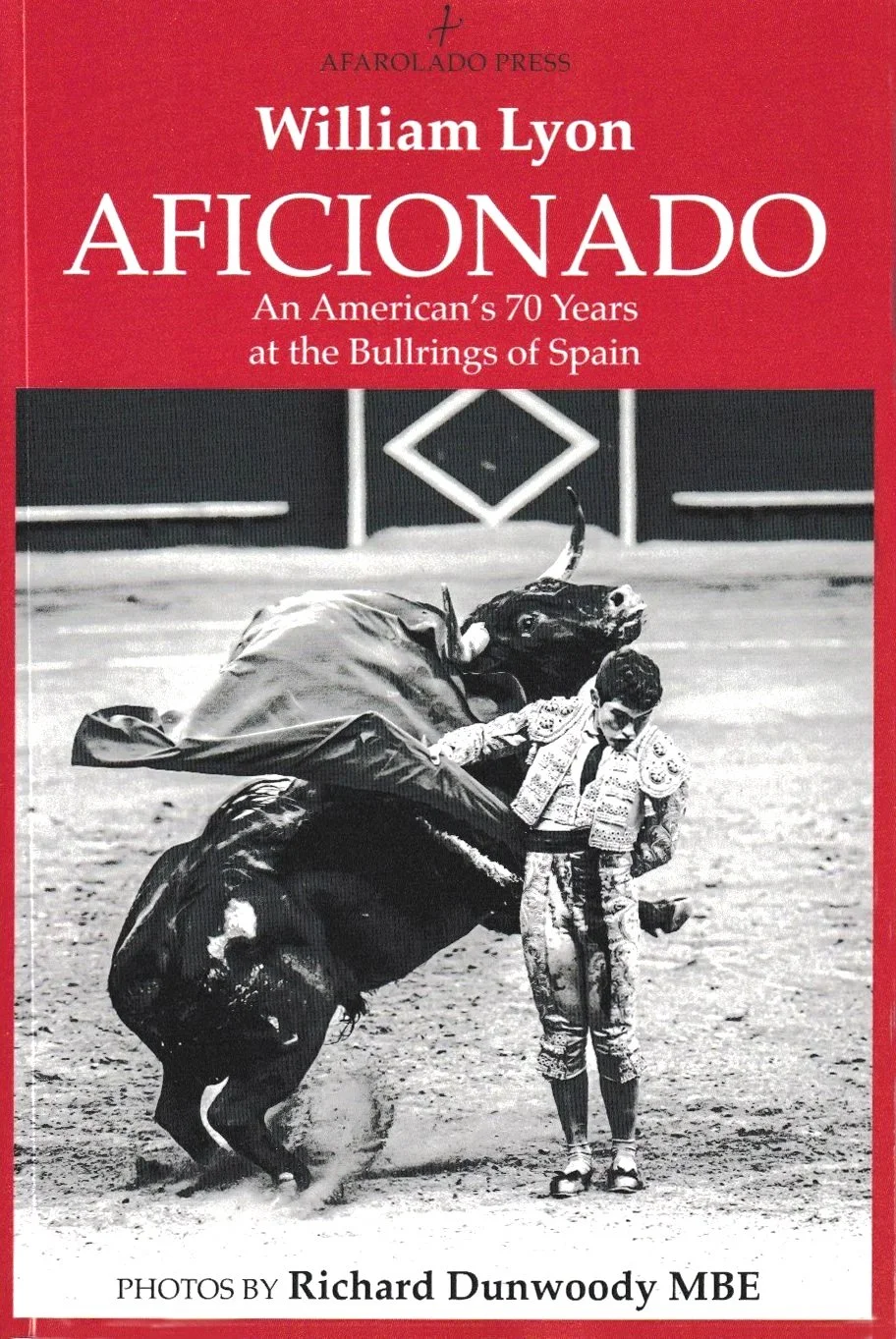A new book in English on bullfighting
The publication of a new book on bullfighting in English is always worth celebrating, particularly when it comes from a knowledgeable aficionado like William Lyon who lives in Spain and has been following los toros (even, at one point, as a bullfight critic for the national newspaper El País) for 70 years.
A flyer for the book describes ‘Aficionado’ as “part primer, part memoir, part travel book” and, indeed, it is all of these things. To gather a full understanding of the different aspects, however, requires careful reading as each is intertwined within the overall text.
The story behind the book concerns Lyon’s longstanding afición having been in abeyance in the years immediately prior to the Covid pandemic. Lyon regards his afición as akin to religious faith and describes the situation as follows: “… for some time now I have been wondering whether my commitment to toreo was really worthwhile. Maybe its values that I once held so dear - they include honor and tradition and valor - no longer apply in this low, mean age. These doubts are painful because this faith has been so important, at times as much as family and work: coming together with other devotees in temples to celebrate our moveable feasts, sharing delight when touched by grace […] To be sure, I have not worshipped regularly. But why do so when the officiants are often unpracticed, the liturgy bastardized, many of the sacrificial animals unhealthy, and our faith regularly defiled by odious mercantile forces?”
In 2022, two years after the pandemic and with a complete Spanish temporada now in prospect, Lyon is persuaded by a friend to “return to the fold” by spending the year going to the bullrings he used to frequent and to record and share the journey, both physical and spiritual.
Lyon takes the reader to Valencia’s Las Fallas, Sevilla’s Feria de Abril, Madrid’s Feria de San Isidro, Pamplona’s sanfermines and Bilbao’s Aste Nagusia, as well as to many other parts of Spain through his memories and anecdotes. This is not a book for blow-by-blow accounts of corridas: rather, descriptions of places and events and the feelings and thoughts they give rise to.
There are also descriptions of the different tercios of the corrida and what to look out for in each. Lyon, like any serious aficionado, is well-read, and his ‘gospels’, parts of which are divulged here, are primarily written by Gregorio Corrochano and José Alameda.
While discussing bullfighting in its contemporary setting of some political and social opposition, there is a lot of history in the book. Lyon takes us from the Middle Ages to the present day, paying particular attention to Pedro Romero, Pepe-Hillo and Costillares; Paquiro and Cúchares; Lagartijo and Frascuelo; Guerrita (who, Lyon claims, was the first torero to link passes); Joselito and Belmonte; and the Litri and Ordóñez dynasties.
As well as toreros and toreras, the bulls are a topic, too - how they have evolved over time; their varied appearances; their selection for corridas; domecqs and toros duros; and horn shaving. The convoluted history of the Concha y Sierra ganadería serves as an example of the changing fortunes of herds over the decades and the efforts made to maintain or restore their standing.
The life of a committed aficionado - and, in Lyon’s case, the isolating experience of being a newspaper’s taurine critic - is described in these pages. I particularly enjoyed the story of a car journey across La Mancha on one of the hottest days of the year in the hope of seeing a toro sardo. By the end of his 2022 temporada, Lyon finds “a good part of my faith recovered,” although it’s not entirely clear how this has come about. Perhaps reminiscing about the fraudulent years of his early afición towards the end of the Franco dictatorship has convinced him that today’s bullfighting is not so bad after all.
The book concludes with a selection of excellent black-and-white photographs by Richard Dunwoody, reminiscent (apart from the absence of hospital scenes) of the collection of photographs that accompanied Ernest Hemingway’s ‘Death in the Afternoon’ and including a section specially dedicated to the artistry of Morante de la Puebla.
In short, however developed one’s knowledge of bullfighting, there will be something in this book of interest. It can be purchased through Amazon.
